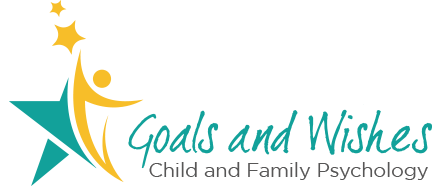Therapies
I draw on a range of evidence-based therapies, in line with the NICE Guidelines, although will often integrate approaches to work towards the best outcomes for the individual and we will regularly review progress.
Cognitive Behavioural Therapy (CBT)
This is based upon an understanding of the link between our thoughts, feelings and actions and what is happening in our body. There is evidence to show that it is effective for a range of difficulties, including low self-esteem and repetitive negative thoughts, anxiety disorders (including generalised anxiety disorder, health anxiety, social phobia and OCD) and low mood and emotional regulation difficulties. It has been found to be effective for both children and adults and is adapted according to a child’s developmental stage.
Eye Movement Desensitisation and Reprocessing (EMDR)
EMDR is a treatment which enables the brain to work through previously unprocessed experiences and reduce their ongoing impact and distress, through supporting new more adaptive processing. It is a recommended treatment for trauma, including Post Traumatic Stress Disorder (PTSD) and can also be very effective for a range of difficulties, including anxiety disorders and the impact of any distressing events in life.
Attachment based therapies: Theraplay and DDP
Theraplay and Dyadic Developmental Psychotherapy (DDP) are two specialist therapies for children who may have experienced early trauma and attachment difficulties and/or are finding it hard to relate effectively to others. These therapies are based on a therapeutic parenting approach and involve working jointly with a child and their parent or carer to work on attachment and experiences relating to complex trauma. They are often used with adoptive families and can also be supportive of families with younger children where there are relational difficulties.
Systemic Work
This involves working with one or more family members in ways which understand the family as a system, and work to make positive changes within this. This is likely to include helping individuals to increase their awareness and understanding of others’ perspectives and the patterns of interactions that may benefit from shifting.
Narrative Therapy
This can be used alongside other approaches and helps the child and parent to see the problem as something external, which can be overcome. Sometimes when there is a ‘problem’ this can become the major focus of everyone’s attention. Narrative Therapy enables a shift in this focus, to build upon and strengthen the more positive aspects in a child or young person’s life and empower the child and family to work towards alternative solutions.
Solution-Focused Therapy
This approach uses a framework of strengths and resources to help an individual or family to identify and work towards a ‘preferred future’. It focuses on what someone wishes to be different and provides space to recognise and move towards this through goal setting and making changes which shift the power and impact of current difficulties.
